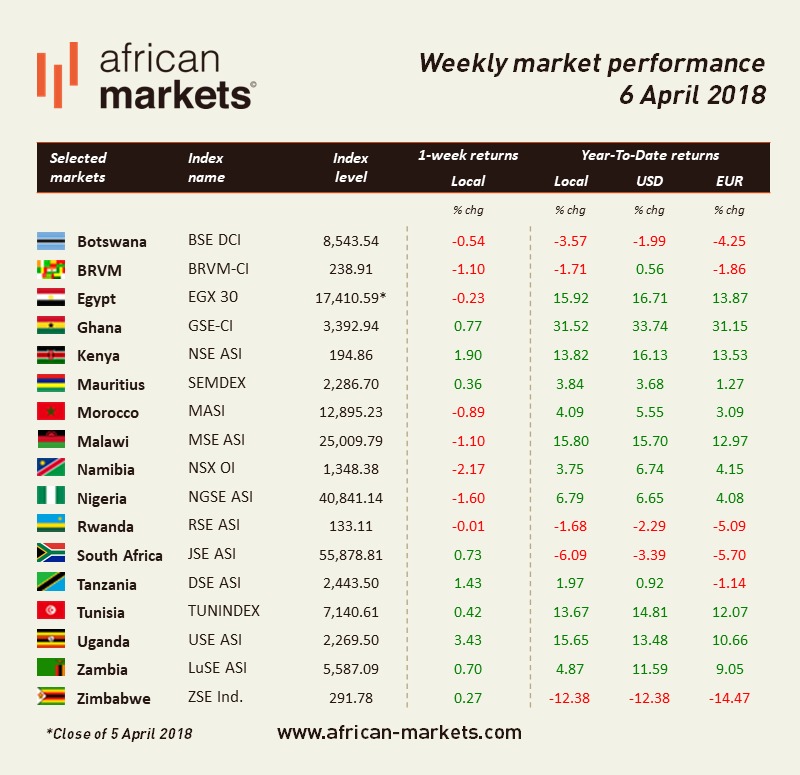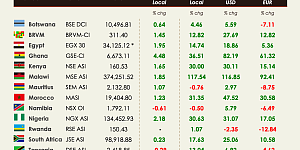African markets started April on a mixed note with Uganda achieving the best performance following strengthening fundamentals in the country.
New tax policy measures could be presented to parliament by July says Ghanaian Finance Minister Ken Ofori-Atta. These new taxes are intended to support the country’s rising expenditure. The Finance Minister also indicated that Ghana could tap into the international market to raise about $1.5bn by end of April 2018. IMF suggested that Ghana should reduce the target to $500mn in order to control the country’s debt stock. The GSE added 0.77%.
The Central Bank of Kenya (CBK) has decreased the cost of its distress lending facility for banks from 16% to 15.50% following the recent change in policy rate. This reduction mirrors the 50 basis points cut of the benchmark lending rate earlier in March. The NSE added 1.90%.
In Lagos, after some delay due to the inability of the committee to have a quorum, the monetary policy committee finally met this week. For its first meeting, the Central Bank of Nigeria (CBN) retained the Monetary Policy Rate (MPR) at 14%. There is a case for easier policy in Nigeria with inflation somewhat decelerating recently. Should inflation continue to decelerate, next MPC meeting could see interest rate cut. The NGSE lost 1.60%.
Margaret Mhango Mwanakatwe, Zambian Minister of Finance, presented the state of the economy last week. She reported that Zambia’s external debt is currently at $8.7 bn from $6.9 bn in December 2016. Zambia’s debt has become a cause for concern for the market with the Minister herself recognizing that financing its developmental programmes from debt and handouts from cooperating partners is not sustainable. Ms Mwanakatwe announced that the government is carrying out a detailed debt sustainability exercise to be completed within the next two weeks before discussions with the IMF. Already in September 2017, a debt sustainability analysis by the IMF and the World Bank showed that Zambia’s debt had been rising excessively since 2011. At the end of 2011 Zambia’s debt stood at $1.9 bn. Moreover, the report highlighted the shift in the composition of public debt towards external non-concessional debt like the Eurobonds which rose to almost 50% in the same period. The LuSE added 0.70%.










































